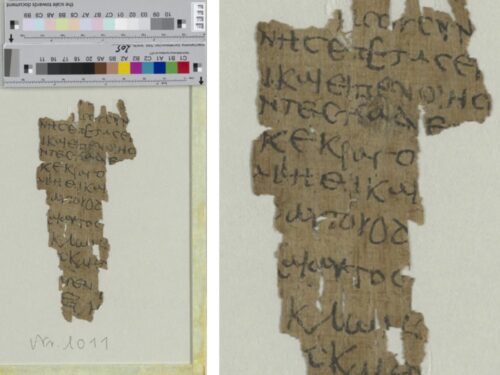
WASHINGTON — A papyrus fragment that has recently been deciphered by historians at a German university — where it had been stored unnoticed for decades — could be the oldest record of Jesus’ childhood, experts said.
The fragment, dating back 1,600 years, has been stored in a university library in Hamburg, Germany, historians at Humboldt University announced in an early June news release.
The historians claim that what they have deciphered is part of the Infancy Gospel of Thomas, which is a Christian text that is not included in the Bible but is part of a collection of texts called the apocrypha that would have been widely shared around the time of the Middle Ages. The Thomas Gospel includes details about Jesus’ life as a child before his public ministry.
The translation of this fragment, which measures around 11 by 5 centimeters and contains the remains of 13 lines in Greek letters, is said to have been from the fourth or fifth century in Egypt. It is “a significant discovery for the research field,” the university said, adding that previously the earliest version of this gospel was a codex from the 11th century.
Lajos Berkes, from Germany’s Institute for Christianity and Antiquity at Humboldt University in Berlin, and Gabriel Nocchi Macedo, a professor at the University of Liège in Belgium, studied the document that had previously been ignored because scholars did not see it as important.
“It was thought to be part of an everyday document, such as a private letter or a shopping list, because the handwriting seems so clumsy,” Berkes said in the news release. “We first noticed the word Jesus in the text. Then, by comparing it with numerous other digitized papyri, we deciphered it letter by letter and quickly realized that it could not be an everyday document.”
The university noted that new technology helped these experts to decipher the language on the fragment and compare it to other early Christian texts.
The few words on this ancient fragment recount what is said to be a miracle Jesus performed as a young boy, bringing figures of clay birds to life.
Macedo and Berkes said in the news release that they believe the text was created as a writing exercise in a school or monastery which they said would explain its clumsy handwriting and irregular lines.
Berkes added that the finding also gives “new insights into the transmission of the text.”
